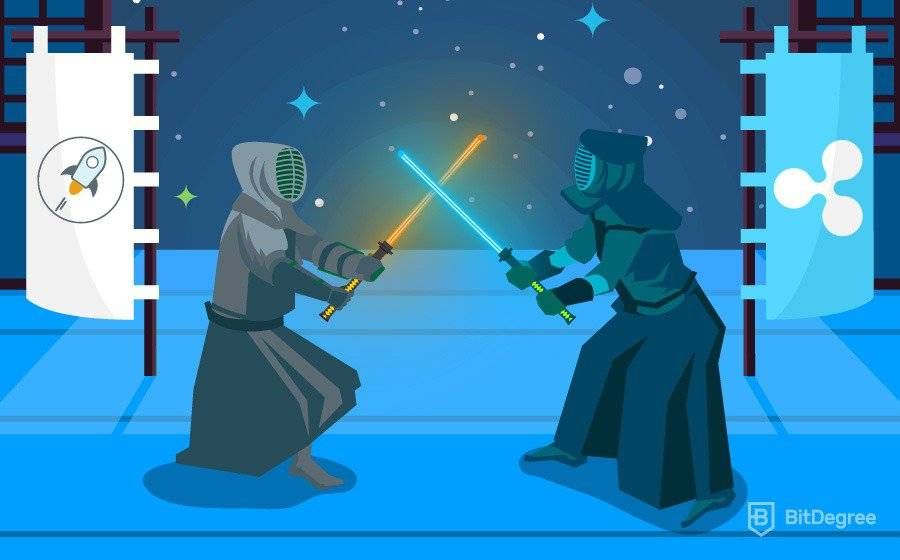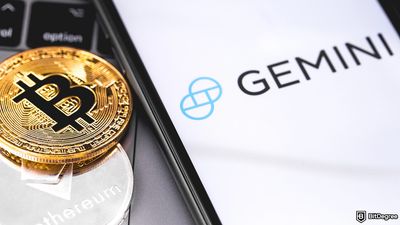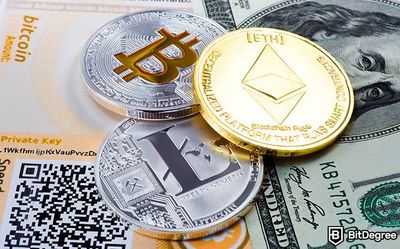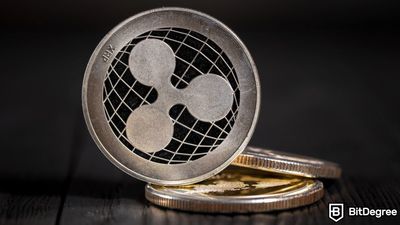So, you’ve heard about both Stellar Lumens and Ripple, but you’re unsure how they compare? Well, don’t worry. This is one of the most asked questions in the cryptocurrency world, as both blockchains are very similar, and today it is my job to explain these similarities and differences in the Stellar VS Ripple comparison.
By the way, did you know that both projects were created by the same person!? (I’ll explain more about this later!)
Anyway, to help clear things up, I am going to give you a full explanation of how each of these platforms work, followed by an overview of their key differences.
Once I have covered the technology, I will then explain who the blockchains were designed to be used by. These two cryptocurrency titans serve different purposes, and are targeted towards different audiences.
So, by the end of reading my Stellar VS Ripple guide, not only are you going to be an expert in both projects, but you will also be able to decide which one you think is better! Once you decide, however, and find yourself looking at how to acquire either of the coins, make sure to check out the top-rated exchanges, such as Binance, Kraken, Coinbase, and KuCoin - they are usually the best places to buy and trade crypto!
So, what are you waiting for? Let’s begin by finding out more about Ripple!

Did you know?
Want to get smarter & wealthier with crypto?
Subscribe - We publish new crypto explainer videos every week!
What is a Crypto Wallet? (Explained With Animation)


Table of Contents
Explaining Ripple Key Elements
Ripple was created in 2012 by American programmers David Schwarz and Jed McCaleb, with Chris Larson aiding in the business side of things. The project has its own cryptocurrency called XRP, which has the third-highest market capitalization out of all cryptocurrencies. There is often confusion about the difference between Ripple and XRP, so let me clear things up and then move to the Stellar VS Ripple battle.
Latest Deal Active Right Now:
$600 WELCOME BONUS
Binance Black Friday Deal
If you're new to Binance, great news - this Binance Black Friday period, you can earn up to $600 in rewards. Sign up, use the code 49316610, and start earning now!
Ripple is the name of the company that is developing software technology. This technology is powered by Ripple's native cryptocurrency - XRP.
The Ripple technology was created to allow banks to transfer money internationally in just a few seconds, at practically no cost. The reason the founders decided to build it was because the current cross-border payments system is slow, expensive and inefficient.
This industry is huge, with an estimated $150 trillion being transferred between international banks every year. However, most of these transactions go through a centralized organization called SWIFT.
Sending payments through SWIFT can sometimes take days before it reaches the receiving bank, especially if less popular currencies are used. SWIFT also needs to use correspondent banks, which help connect both the sender and receiver to the network.
Every third party that is involved in the transaction charges their own commission, which is why it costs banks so much to send money overseas.
However, the Ripple system uses something called distributed ledger technology, which allows banks to bypass third parties and instead trade bank-to-bank.
The XRP cryptocurrency can also be used by banks using Ripple technology, as it helps provide liquidity between two different currencies. In total, there will be 100 billion XRP coins issued, with the Ripple team holding almost 60% of this supply.
It is important to remember that, although the Ripple protocol is being targeted at the banking industry, it can be used by anyone to send and receive funds, wallet-to-wallet.
So, now that you know what both Ripple and XRP are, the next part of my Stellar Lumens VS Ripple guide is going to give you an overview of Stellar Lumens!
Bottom Line of Stellar Lumens
Stellar Lumens was created two years later, in 2014, by Jed McCaleb, who was a co-founder of Ripple. Just like I mentioned earlier, where there is a difference between Ripple and XRP, there is also a difference between Stellar and Lumens!
Stellar is the technology that allows funds to be sent and received quickly and cheaply. Stellar also uses a distributed ledger protocol to process transactions, and its code is very similar to Ripples. In fact, lots of people think that it is a fork of Ripple, however, the Stellar Lumens developers say that it is not. So, the Stellar VS Ripple is already starting.
Note: When people use the term fork, it means that a new blockchain has been built from the code of an older blockchain, but changes have been made to make it different. One of the most famous forks is Bitcoin Cash, which forked from the original Bitcoin code but made transactions faster.
Lumens is the cryptocurrency that supports the Stellar technology, and it is sometimes called XLM, which is its ticker symbol. Lumens has done very well since it was released, and it is now a strong multi-billion dollar top 10 cryptocurrency.
Although Stellar can also be used by banks, the team are aiming their protocol towards the developing world. The idea is that by using Stellar, everyday citizens and organizations from poorer countries will be able to transfer money internationally at practically no charge, in just a few seconds.
Here is a quick example of how somebody might use the Stellar network.
- John is located in Argentina and wants to pay Bob in Kenya for his coffee delivery.
- Normally, John would need to use the SWIFT network, which is slow and expensive. However, this time he is going to use Stellar Lumens to make the payment.
- John transfers the Argentinian Peso through Stellar, which quickly converts into Lumens, which then quickly converts to Kenyan Shillings.
- The transaction has been completed in just a few seconds with virtually no fees.
The Stellar protocol can also exchange two fiat currencies directly if there is enough activity; however, if this isn’t possible, it can just use Lumens to bridge the two together.
So, now that you know what both projects do, the next part of my Ripple VS Stellar guide is going to talk about their key similarities!
Stellar VS Ripple - Key Similarities?
Before considering their differences, it is important to understand just how similar or different Stellar VS Ripple are. As I briefly mentioned earlier, the code of both blockchains is almost identical, which is why they are sometimes difficult to tell apart.
First, unlike Bitcoin (where people can contribute their extra computing power to help verify transactions), neither Stellar nor Ripple use miners. This is because of how the technology works.
In Bitcoin, anyone can mine by simply downloading the client to their device, and in return, they get rewarded with new coins. Each computer that joins the system is called a node, and they help to run the Bitcoin network, which is why the Bitcoin network is decentralized.
Although Lumens and XRP are still decentralized, they do not allow the public to run nodes. Currently, the developers behind Stellar and Ripple run their own nodes across multiple servers, however, banks and private organizations that decide to use the technology can also run nodes.
The second key similarity is that both Stellar and Ripple use a distributed ledger to verify the movement of funds. This means that transactions only take a few seconds to process, and the fees are normally less than a cent.

Both protocols achieve this by only charging a small fraction of a coin, for example, 0.0001 XRP or 0.0001 XLM.
It is important to remember that both projects might want to keep the value of their coin low, otherwise, it might be too expensive to use as a global payment system.
An additional similarity in Stellar VS Ripple is that the coin supply is controlled by the developers. Unlike Bitcoin, where new coins are gradually released by the network until the maximum supply has been reached, Stellar and Ripple can increase their circulation whenever they choose to.
Note: There is a difference between the coin supply and coins in circulation. For example, the total supply of Ripple is 100 billion, meaning that this is the maximum amount that will ever exist. However, the amount in circulation is only about 40 billion, with the Ripple team holding the other 60 billion.
This is why some people don’t like either project, as they think it is too centralized (controlled by one single entity).
Let’s recap some of their similarities:
- Both were co-founded by Jed McCaleb
- No mining allowed – private nodes
- Both use distributed ledger technology (DLT)
- Near instant and free transactions
- Perfect for international transfers
- Developers control the circulating supply
So, now that you know some of the main similarities, the next part of my Ripple VS Stellar guide is going talk about how the two projects differ!
Stellar VS Ripple: Key Differences
As you have already gathered, the technology behind Stellar and Ripple are very similar. However, they do have their differences. So let's start the Stellar VS Ripple battle.
First, it is important to understand why Jed McCaleb decided to leave Ripple to create Stella. McCaleb has a passion for helping the unbanked — people in poorer countries who do not have access to everyday financial services.
As he has done many times before, McCaleb has donated free Lumens to those in need, which is also in his plans for the future. This is why Stellar calls itself a “Not-for-Profit Organization”.
This is where Ripple is different in the Stellar VS Ripple battle. They are looking to target the multi-trillion cross-border payments sector by providing banks and financial institutions with their technology. It is hoped that once they start using it, they will also buy XRP to solve the current issues of liquidity.
The next key difference is the way that nodes reach a consensus (agreement). A consensus model is a technology that confirms and validates transactions without needing to use a third-party intermediary. There are many different types of consensus, with the two most popular being Proof-of-Work (used by Bitcoin) and Proof-of-Stake (used by Dash).
However, Stellar and Ripple don’t use either of those. Stellar uses something called “Stellar Consensus Protocol”, while Ripple uses “Proof-of-Correctness”.
Next, although I mentioned earlier that the developers of both Stellar and Ripple can release coins when they choose to, there is a slight difference in how the supply works. The Stellar team has stated that they will add inflation of 1% every year to the supply of Lumens coins, which is like real-world money.
For example, when the U.S. Federal Reserve prints more dollars, it creates inflation. If a currency is inflated, it means that its value goes down as there is more in circulation.
On the other hand, Ripple’s XRP coin is deflationary. This is because they have decided that they will burn transaction fees - meaning, over time, the amount in circulation will go down.
Note: When coins are burned, it means that they are sent to a wallet address that can never be accessed. This is because the private keys are unobtainable, meaning the coins can never be spent.
Also, in the Stellar VS Ripple battle, many people think that Ripple is more centralized than Stellar. When Jed McCaleb left Ripple to create the Stellar, the Ripple team were able to freeze his XRP coins. Although this has since been resolved, it shows that Ripple has more control than a decentralized project should have. Many people choose Stellar over Ripple because of this reason.
| Stellar | Ripple | |
| Aim of Project | Help the unbanked in poorer regions. | Supply banks and financial institutions with technology to solve the issues of slow and expensive cross-border payments. |
| Consensus model | Stellar Consensus Protocol | Proof-of-Correctness |
| Supply | Inflationary (1% per year) | Deflationary (Transaction fees burned) |
| Control | Considered less centralized | Considered more centralized |
So, now that you know the main differences between the two, I am now going to talk about the teams behind these projects!
Stellar VS Ripple: The Team
Stellar Lumens is managed by the original founders, Jed McCaleb, and Joyce Kim. McCaleb is highly experienced in the world of internet technology and has started many other projects. This started with eDonkey, which was one of the first-ever peer-to-peer music-sharing platforms.
After this, he created one of the first-ever Bitcoin exchanges, MT. Gox, which at one point was hosting more than 70% of all Bitcoin transactions! After he sold MT. Gox, McCaleb then founded Ripple.
The Ripple project and its XRP coin are managed by a parent company called Ripple Labs. Interestingly, they were originally called Opencoin, however, they rebranded to Ripple Labs in 2015. Their headquarters are based in San Francisco, California, and have over 150 employees! So the Stellar VS Ripple battle is quite harsh!
Ripple’s CEO, Brad Garlinghouse, is highly experienced in the world of business and has held previous roles at both AOL and Yahoo. Garlinghouse is the public face of Ripple and has made many television appearances in the U.S. Chris Larsen, who co-founded the project, is now the company Chairman, which means he still has a major influence.
Ultimately, Stellar and Ripple both have really strong teams, which is one of the most important things to consider when investing in a project. However, Ripple Labs are considered more corporate than Stellar. They also have a much larger team and have received lots of private investments too. However, this hasn’t stopped Stellar from quickly becoming a top 10 cryptocurrency!
If you have read my Stellar VS Ripple guide so far, you should now have a good understanding of how each project works, as well as their similarities and differences. The next part of my Stellar VS Ripple guide is going to look at how they have performed so far…
Stellar VS Ripple: Current Market Position
Lumens is now a multi-billion-dollar coin, having reached heights of $13 billion in December 2017. Its most impressive achievement so far is the partnership it formed with IBM.
The deal officially went live in March 2018 and will allow IBM to easily move funds between banks in the South Pacific. If successful, it is expected that it will expand to other regions. Exciting!

If Stellar Lumens can form more partnerships like the one with IBM, there is a good chance it will continue to rise in value.
As of April 2018, Ripple is the third most valuable cryptocurrency available, way behind Ethereum but way ahead of Bitcoin Cash! Interestingly, for a short period of time in late 2017, Ripple overtook Ethereum to become the number 2 coin, however, this has since reversed.
As you would expect for a project that has been around for two years longer, Ripple has formed even more important partnerships. In fact, they have tested their distributed ledger technology with over 100 different banks, including UBS and Santander!

The most important thing for the value of XRP to increase is that banks use it for cross-border payments. At present, the Ripple technology doesn’t need XRP to function, however, it could prove to be useful when banks need it for liquidity.
This is because when banks want to trade in a different currency to their own, they have to open up a notary account in the country they want to send the money too. This can be really inconvenient as the bank must hold funds in every notary account that it holds. XRP would solve this issue, so there is a good chance that banks might decide to start using it.
Conclusion
Well, that’s the end of my Stellar Lumens VS Ripple guide! If you read it all the way through, you should now have a really good understanding of how each project works, as well as a whole bunch of other stuff!
I have explained in detail the key similarities and differences between Stellar VS Ripple. And you should now know that (although both platforms have similar technology) they are both on different journeys. So, the important question is, which do you think is better?
If you study the pricing charts of both coins, the changes in value are actually quite similar. This could mean that investors are deciding to invest in both, simply because they can’t make a final decision… I guess we will never know.
Ultimately, both Lumens and XRP have performed incredibly well, and Stellar and Ripple technologies have formed some amazing partnerships. Remember - if you're looking to purchase any of the two crypto assets, make sure to utilize the top-rated exchange platforms! Notable picks include Binance, Coinbase, Kraken, and KuCoin.
Already have some XLM or XRP? Check out hardware wallets - Ledger and Trezor offer the best crypto storage solutions on the market!
I would love to know if you decided to make an investment, and if so, which one you decided to go with? Or maybe you couldn’t decide either and chose to invest in both? Let me know in the comment below!
The content published on this website is not aimed to give any kind of financial, investment, trading, or any other form of advice. BitDegree.org does not endorse or suggest you to buy, sell or hold any kind of cryptocurrency. Before making financial investment decisions, do consult your financial advisor.













